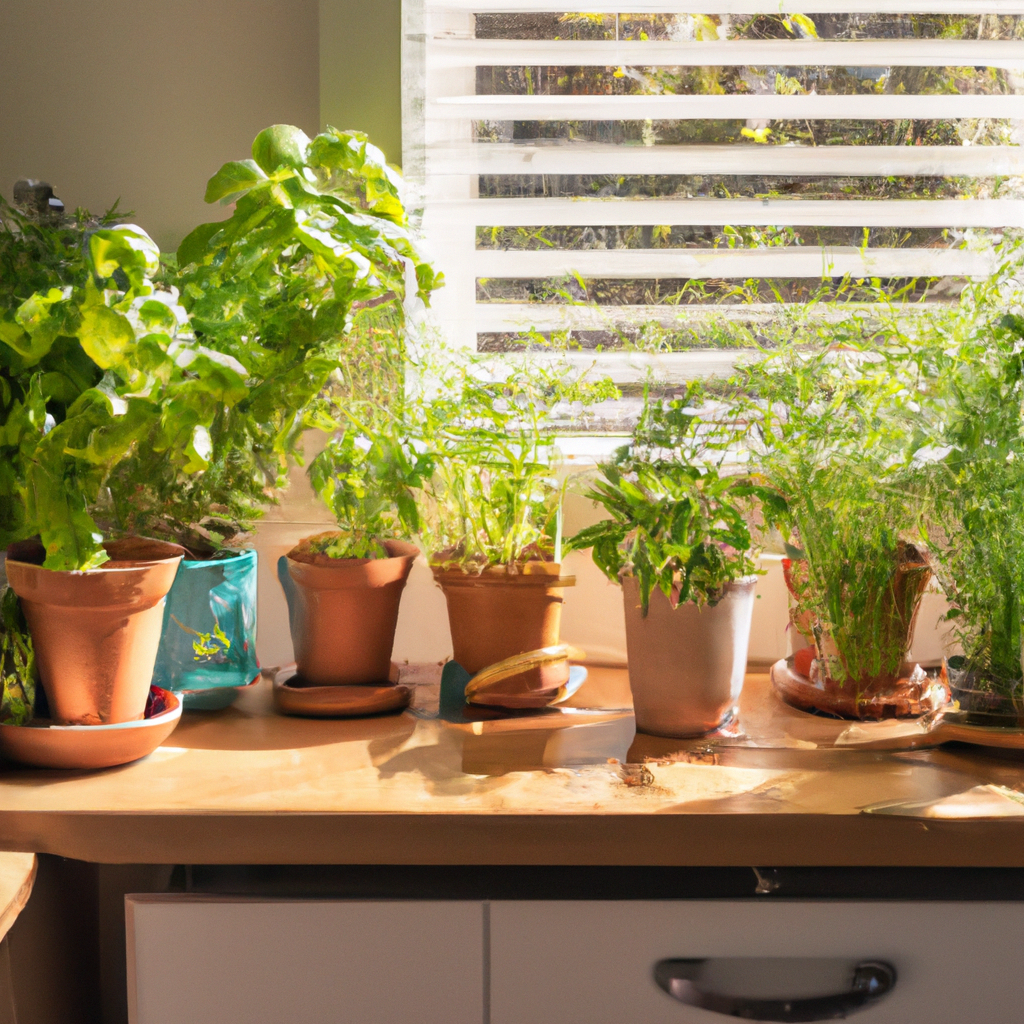
Herbs have been used for centuries to add flavor and aroma to our dishes, as well as for their medicinal properties. But what if you don’t have a garden or live in a place with limited outdoor space? The good news is that you can still enjoy fresh and healthy herbs by growing them indoors. In this comprehensive guide, we will share valuable tips and insights from expert herb enthusiasts on how to successfully grow and nurture herbs indoors.
Getting Started: Choosing the Right Herbs
When it comes to growing herbs indoors, selecting the right herbs is crucial. Not all herbs adapt well to indoor conditions, so it’s important to choose varieties that thrive in limited sunlight and space. Here are some popular herbs that are known to do well indoors:
- Basil: This aromatic herb is a favorite among many gardeners and is relatively easy to grow indoors. It requires at least six hours of sunlight each day and well-draining soil.
- Parsley: Known for its vibrant green leaves and versatility in cooking, parsley is an excellent choice for indoor gardening. It prefers indirect sunlight and moist soil.
- Mint: Mint is a fast-growing herb that adds a refreshing flavor to beverages and dishes. It thrives in partial shade and prefers slightly moist soil.
- Chives: These slender, onion-flavored leaves are perfect for garnishing and adding a mild onion taste to your dishes. Chives grow well in moderate sunlight and well-draining soil.
- Rosemary: With its woody aroma and robust flavor, rosemary is a popular herb for both cooking and medicinal purposes. It requires at least six hours of direct sunlight each day and well-draining soil.
- Thyme: This fragrant herb is known for its culinary uses and is a great addition to any indoor herb garden. Thyme prefers full sunlight and well-draining soil.
Setting Up Your Indoor Herb Garden
Once you’ve chosen the herbs you want to grow, it’s time to set up your indoor herb garden. Here are some key factors to consider:
1. Location and Lighting
Herbs need an adequate amount of sunlight to grow and thrive. Ideally, place your herbs near a south-facing window where they can receive at least six hours of direct sunlight each day. If natural sunlight is limited, consider using artificial grow lights to supplement their light requirements.
2. Containers and Soil
Selecting the right containers and soil is essential for the health of your herbs. Use pots or containers with drainage holes to prevent waterlogging. Choose a well-draining potting mix specifically formulated for herbs or make your own by combining equal parts of potting soil, perlite, and vermiculite.
3. Watering and Humidity
Proper watering is crucial for the growth of your indoor herbs. Most herbs prefer slightly moist soil, so water them when the top inch of soil feels dry to the touch. Avoid overwatering, as it can lead to root rot. Additionally, herbs thrive in a humid environment, so consider misting them regularly or placing a tray of water near the plants to increase humidity.
4. Temperature and Ventilation
Herbs generally prefer temperatures between 60°F and 75°F (15°C to 24°C). Avoid placing them near drafts or heating vents, as extreme temperature fluctuations can stress the plants. Good air circulation is also important, so ensure there is proper ventilation in the room where your herbs are located.
Nurturing Your Indoor Herb Garden
Growing healthy herbs indoors requires ongoing care and attention. Here are some tips to help you nurture your indoor herb garden:
1. Pruning and Harvesting
Regular pruning is essential for maintaining the health and shape of your herbs. Pinch off the tips of the stems to encourage bushier growth and prevent them from becoming leggy. Harvest your herbs frequently to promote new growth and ensure the best flavor in your dishes.
2. Fertilization
Indoor herbs benefit from regular fertilization to provide them with essential nutrients. Use a balanced, water-soluble fertilizer specifically formulated for herbs, and follow the manufacturer’s instructions for application rates. Avoid overfertilizing, as it can lead to nutrient burn.
3. Pest Control
Indoor herbs are susceptible to pests such as aphids, spider mites, and whiteflies. Inspect your plants regularly for any signs of infestation, such as yellowing leaves, sticky residue, or small insects. Use organic pest control methods such as neem oil or insecticidal soap to treat and prevent pest problems.
4. Rotation and Succession Planting
To ensure a continuous supply of fresh herbs, consider rotating your plants and practicing succession planting. This involves starting new herbs from seeds or cuttings while harvesting mature plants. By staggering the growth of your herbs, you can enjoy a constant supply throughout the year.
Conclusion
Growing healthy herbs indoors is a rewarding and practical way to enjoy fresh flavors and aromas all year round. By choosing the right herbs, providing optimal growing conditions, and giving them proper care, you can create a thriving indoor herb garden. Whether you have a small apartment or limited outdoor space, you now have the knowledge and tips from expert herb enthusiasts to successfully grow your own herbs indoors. Start your indoor herb garden today and elevate your culinary creations with the freshness and fragrance of homegrown herbs.